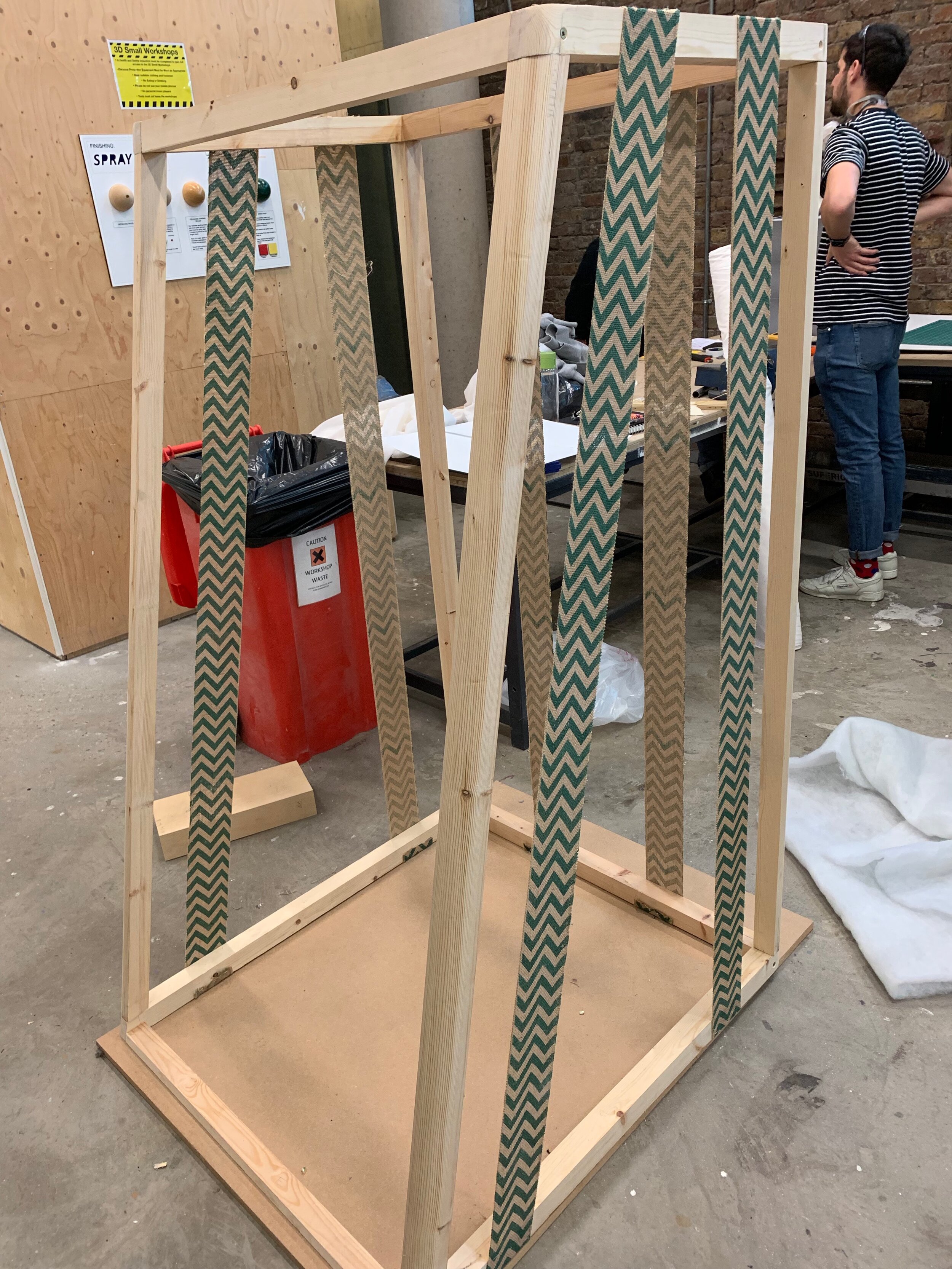LI_BOO
li-fi booth
description
Li_Boo is inspired by the old phone booth and Japanese internet café. It is designed to satisfy the need for privacy and security in a crowded public space.
The technology integrated is Li-Fi, which boasts the ability to transmit data at high speed through light. One of the benefits of Li-Fi is security. Light does not pass the walls and hence, will provide more secure data transfer.
Li_Boo is thought to give the idea of a private shelter. It is designed for places where people usually work, study, or are connected for an extended period, for example Airports, Hotels, or Libraries.
It aims to offer better service (in terms of performances) than the current Wi-Fi and to let the user feel safe. In particular, the case of the Airport has been taken into consideration as this product is allocated in a lounge area offering a premium service more than one within reach of all.
Project Gallery:
design process:
During the realisation of this project, I went through the all design process. Defining first an area of action, then researching and analysing what was already in the market, followed by an ideation phase and prototyping, until the final outcome.
Li-Fi explained. (PureLiFi.com)
What is li-fi?
LiFi is high speed, bidirectional, and fully networked wireless communication of data using light.
When an electrical current is applied to a LED light bulb a stream of light (photons) is emitted from the bulb. LED bulbs are semiconductor devices, which means that the brightness of the light flowing through them can be changed at extremely high speeds. This means that the signal can be sent by modulating the light at different rates.
The signal can then be received by a detector (dongle) which interprets the changes in light intensity (the signal) as data. Using this technique, data can be transmitted at high speeds, and because light cannot go through walls, it will provide a more secure data transfer. (PureLiFi, 2017)
components:
Taking into consideration PureLiFi kit, It is possible to see that what is needed is: an access point, a driver, a LED bulb, and a dongle (USB).
The USB dongle is inclusive of a receiver to download the code sent from the LED and a transmitter for the uplink through infrared. It is compatible with normal USB 2.0 devices.
Windows 10, Windows 7, Linux and Mac OS are all compatible with the system. It provides 60 degree field of view.
To install a Li-Fi system is simple. Nowadays, the driver and the access point are integrated with the LED bulb, so the only thing to do is connect the bulb to the Ethernet cable. Once everything is set, the connection is ready to start.
reproduced li-fi system by Arduino experimentations
3D BUSINESS MODEL:
defining the three main aspects:
Problems and needs are the starting points for the definition of a Persona and a scenario of use.
Public places seems to be the most favourable context for Li- Fi. I went a little deeper, finding that the Airports and Hotels are then places where people often have to wait for longer terms, layovers, or working staying in hotels.
Taking travellers and airport under consideration, the dilemma of data roaming is the main problem for most of them when skipping across to a different country. Most airports around the world offer free Wi-Fi service, making travel smoother and more convenient for passengers; this becomes a problem considering the risks of public Wi-Fi and the interferences due to the high number of requests.
Business travellers seek to have different exigencies while travelling, the main one resulted to be having a space where they can work before a meeting or continue some practices even outside the office, which is nowadays translated in airport Lounge Areas. Also, an always more increasing number of passengers are seeking out the calm haven of an airport lounge. So that, people are willing to pay more to have peace and relax at the arrival.
Another research shows how business travels are more than 70% in compare to leisure or other. It means an high number of people is directed to lounge areas everyday. Lounge areas and demanding travellers are the perfect match to bring this product to the light.
PROTOTYPING PROCESS
CONTEXTUALISATION VIDEO
“LiFi is like an undiscovered beach full of pebble stones – under each stone there is something new and exciting to discover, and what is really thrilling is that these discoveries can change our lives and create massive commercial opportunities.”























































